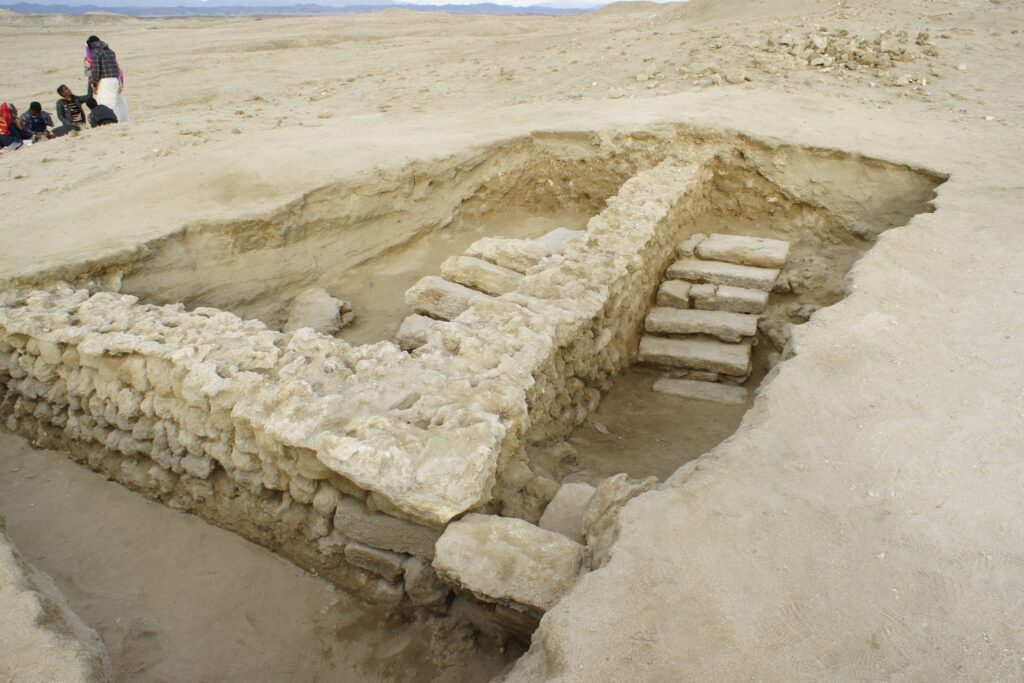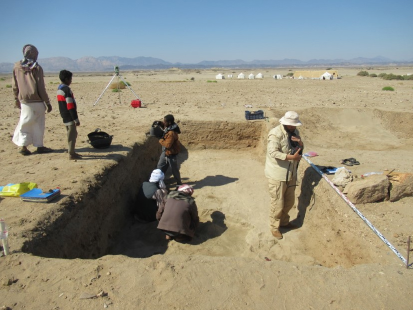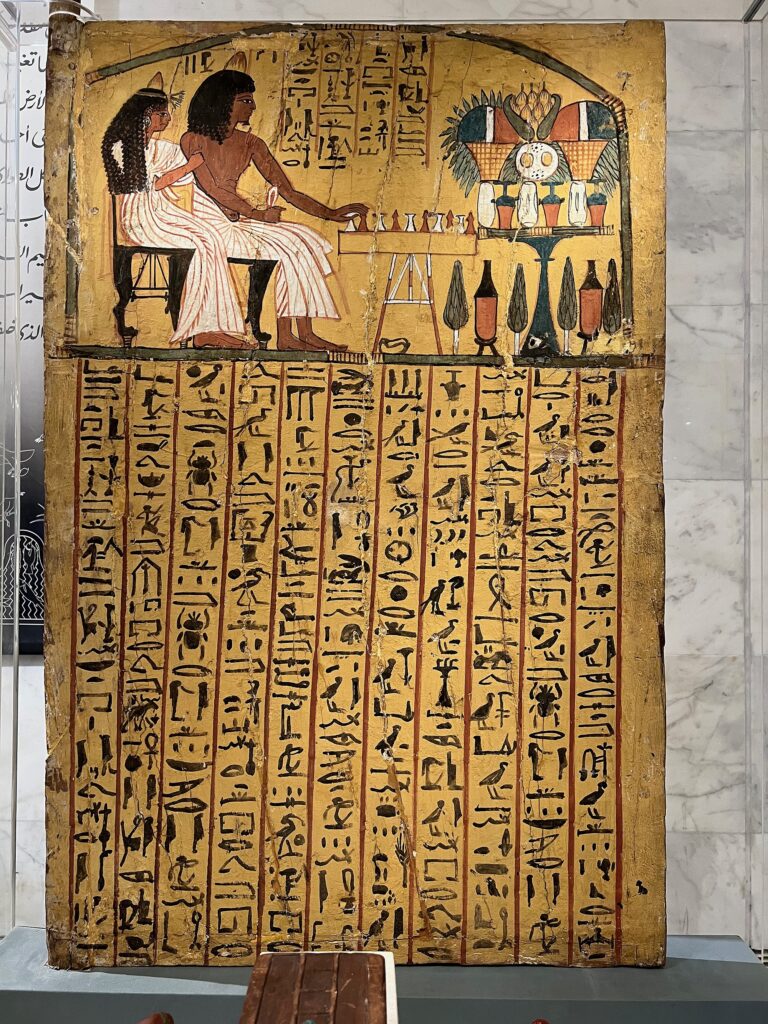Berenike: Secrets of an Ancient Trade Hub

Author: Yara Marei, Arab America Contributing Writer
Introduction
Berenike, a remote port town on Egypt’s Red Sea coast, has captured the attention of archaeologists and historians for its crucial role in ancient maritime trade. Recent discoveries at this site have provided invaluable insights into the intricate web of commercial and cultural exchanges that took place between the Mediterranean world and the Indian Ocean. Let’s dive deep into this interesting trade hub.
John Sidebotham’s Legacy

Archaeologist John Sidebotham, 72, has dedicated 30 years to unearthing Berenike’s secrets. Since his youth, inspired by his father’s post in Turkey, Sidebotham dreamt of becoming an archaeologist. His training in Cairo, Athens, and the United States led him to excavate in various Mediterranean regions before finally obtaining a permit to dig at Berenike in 1994. Today, his international team continues to uncover remarkable artifacts, shedding light on the port’s vibrant history.
A Lost and Rediscovered Port

Berenike’s significance dates back to its founding by Pharaoh Ptolemy II around 275 B.C. The city, named after Ptolemy’s mother, became a crucial hub for maritime trade, particularly in African elephants. These elephants were shipped from present-day Eritrea, Djibouti, and Somalia to Berenike to be used in warfare. Although the use of war elephants declined in the second century B.C., the port found new life under Roman rule, becoming a key stop for traders riding the monsoon currents across the Indian Ocean.
Unearthing the Elephant Trade
Excavations have revealed elephant skull fragments, teeth, and a V-shaped dry moat used to contain the animals after their sea voyage. These findings underscore Berenike’s early importance in the transcontinental trade network. As Roman traders began to exploit the monsoon winds, Berenike evolved into a bustling port where vast oceangoing vessels could unload their luxurious cargoes before making their way to Rome.
The Temple of Isis

In 2020, archaeologists discovered the Isis temple, a walled rectangle about 100 by 40 feet, built around A.D. 20 by Marcus Laelius Cosmus. The temple, dedicated to safe ocean travels and local officials, featured a courtyard for offerings and dedications. Among the finds were remains of statues and inscriptions, including a gilded wooden figure of Serapis, a stone head with tight curls, and bronze fingers suggesting bronze statues once adorned the space. This temple, rich in artifacts, provided a glimpse into Berenike’s religious and social fabric.
The Wealth of Berenike
Berenike’s strategic location made it a conduit for diverse goods. Excavations have unearthed pottery from Spain and Morocco, frankincense from South Arabia, beads from Southeast Asia, and an astonishing cache of 16 pounds of peppercorns from India. The port’s importance is further highlighted by the discovery of workshops, storehouses, and ship planking from both Lebanon and Kerala, reflecting its cosmopolitan nature.
Socotra: A Crossroads of Cultures
Socotra, a rocky island off Yemen’s coast, served as a crucial stopover for ships. Its cliffs house a deep cave with inscriptions from sailors in various scripts and languages. In 2019, Strauch analyzed over 100 inscriptions from Indian visitors, revealing the presence of sailors and ship captains from Gujarat between the second and fifth centuries A.D. These inscriptions indicate the diverse and influential nature of Indian travelers.
Muziris: The Great Indian Port
Pattanam, believed to be the ancient port of Muziris on India’s southern coast, was a hub for Greek traders who exchanged gold for Indian pepper. Excavations led by P.J. Cherian uncovered a wharf area, a wooden canoe, and thousands of Mediterranean pottery sherds. Among the finds were spindle whorls, gaming counters, and a rare seal ring with an Egyptian sphinx, highlighting Muziris’ significance in the global trade network.
Reassessing Historical Narratives
The traditional view of Romans as the primary agents of Indian Ocean trade is being challenged. Indian merchants, ship captains, and sailors played a pivotal role in these networks, bringing their culture and goods across the ocean. Profits from this trade were vital for the Indian subcontinent’s ruling dynasties and the growth of Buddhism. The Berenike and Socotra discoveries underscore the importance of Indian agents in shaping the trade dynamics of the ancient world.
The Berenike Buddha
On January 18, 2022, archaeologists at Berenike discovered an exquisitely carved marble head, part of the Berenike Buddha statue, believed to be linked to a robed marble body found in 2018. The figure, carved from Prokonnesian marble, features “tortellini curls” influenced by elite Roman hairstyles and triangular sun rays reminiscent of Mediterranean sun god traditions. Additionally, smaller Buddhas made from local stone were found, suggesting they were carved by Greco-Roman sculptors, possibly from Alexandria.
Indian Influences and Cultural Exchange
The Berenike Buddha and associated finds highlight the intricate cultural exchanges between East and West. Scholars see parallels between the Berenike Buddha and second-century A.D. Buddhas from Gandhara. A Sanskrit inscription dating to A.D. 249, found near the Buddha’s head, is the first of its kind in Egypt and mentions a Roman emperor. The carved triad of early Indian deities found nearby further illustrates the profound cultural interactions at Berenike.
A New Perspective on Ancient Trade
The discoveries at Berenike, Socotra, and Muziris are reframing our understanding of ancient trade. Indian merchants and sailors were not mere participants but central players who carried their traditions and influenced the regions they visited. These findings challenge the notion of a Roman-dominated trade network and highlight the significance of Indian agents in driving these trans-oceanic exchanges.
Conclusion
The ongoing excavations at Berenike and related sites continue to reveal the complexities of ancient trade networks. These discoveries are reshaping our historical narratives, emphasizing the crucial role of Indian merchants and sailors in the global trade of antiquity. As researchers delve deeper into the material and literary evidence, the story of Berenike and its connections to the broader world becomes ever more fascinating and intricate.
Visit our blog here!








